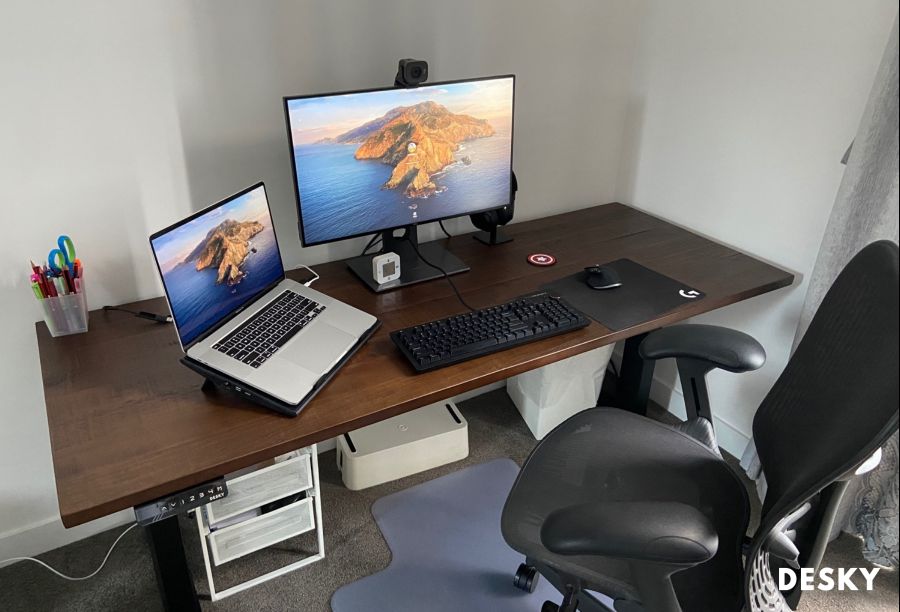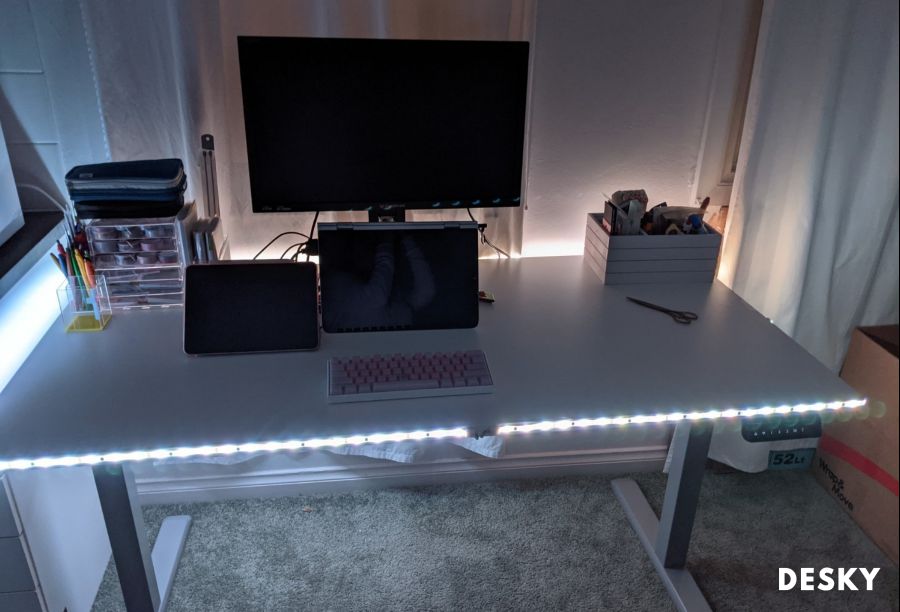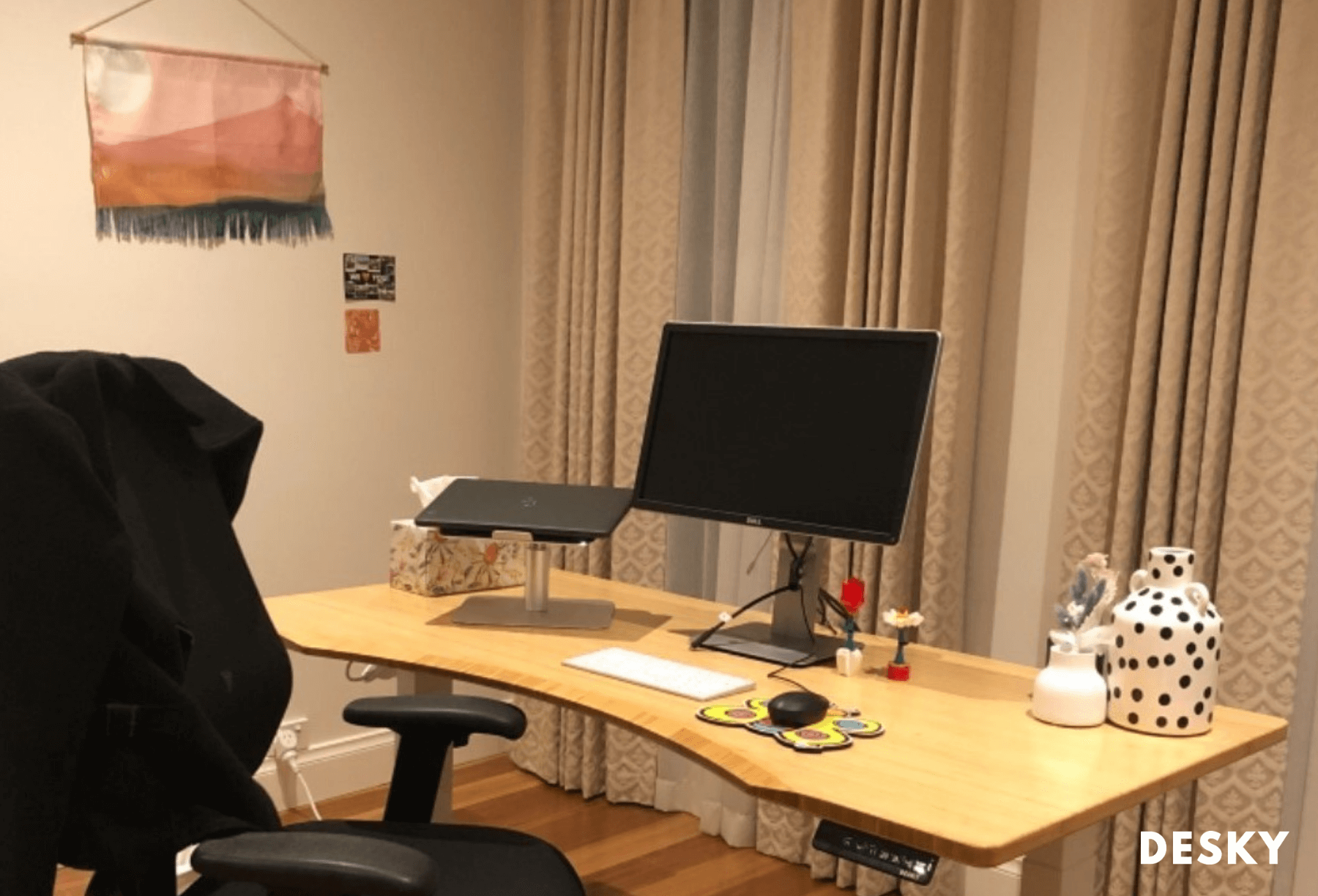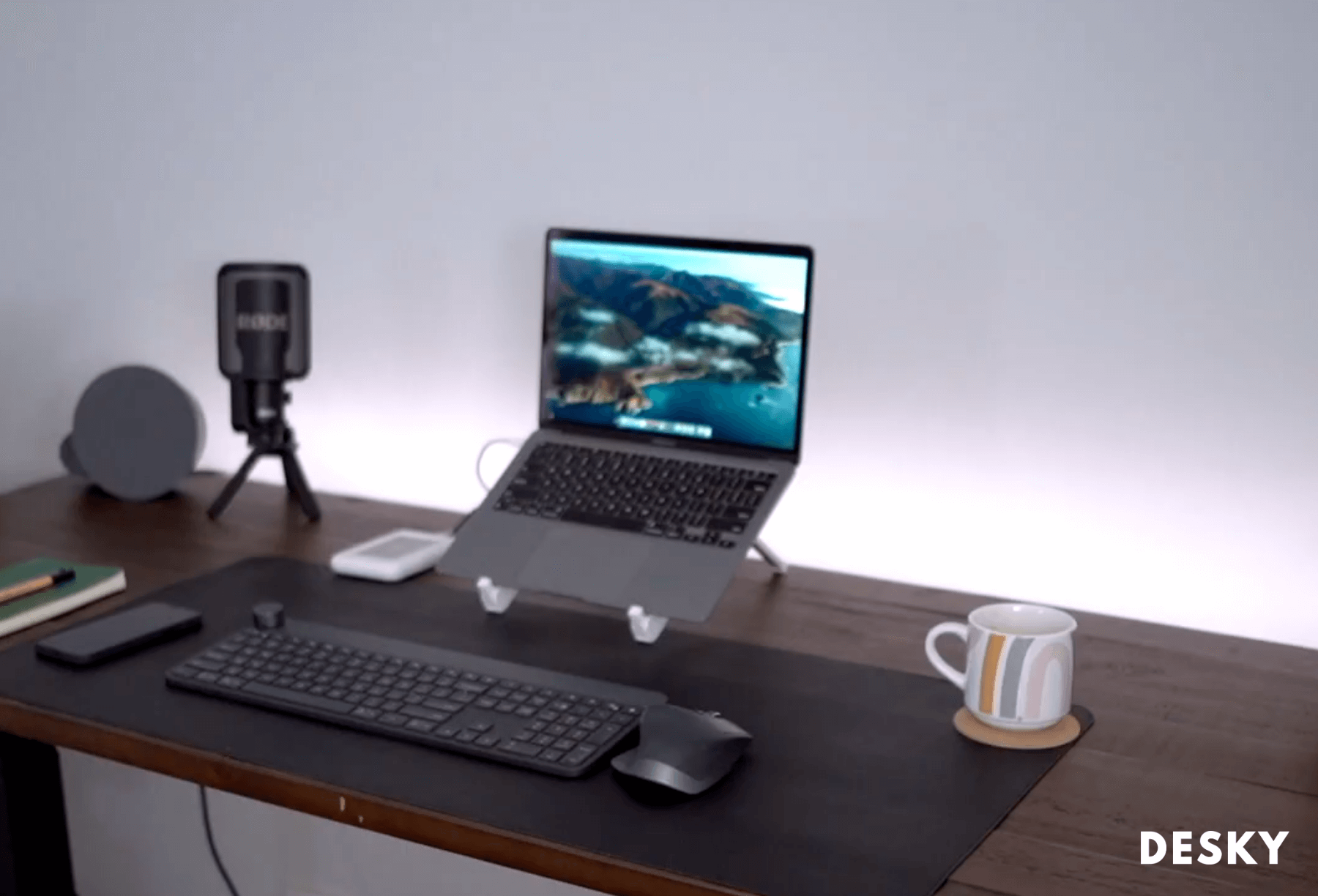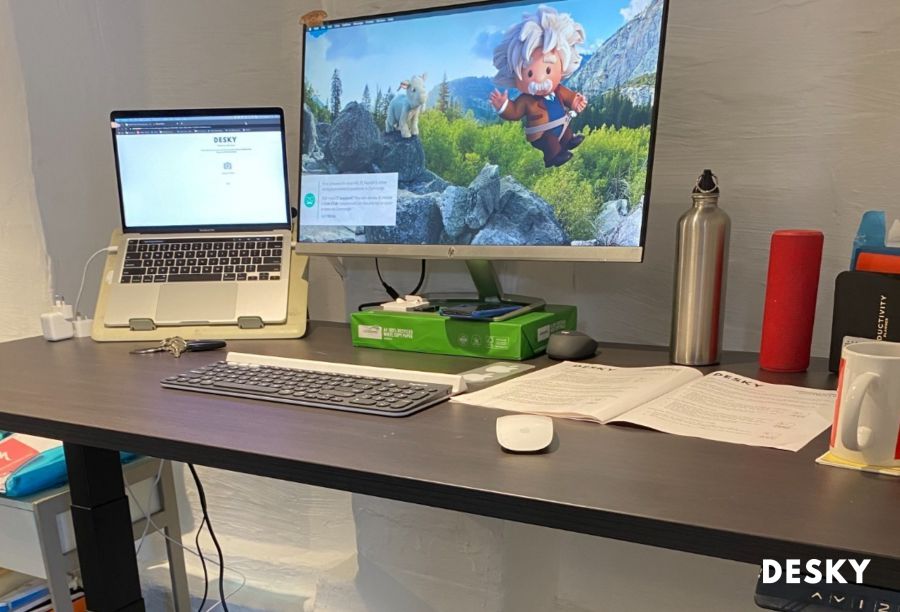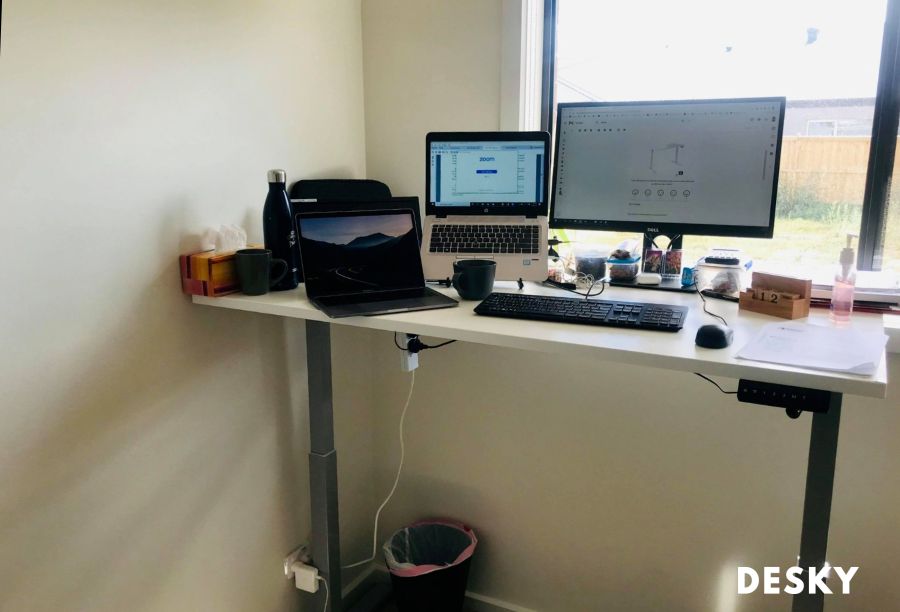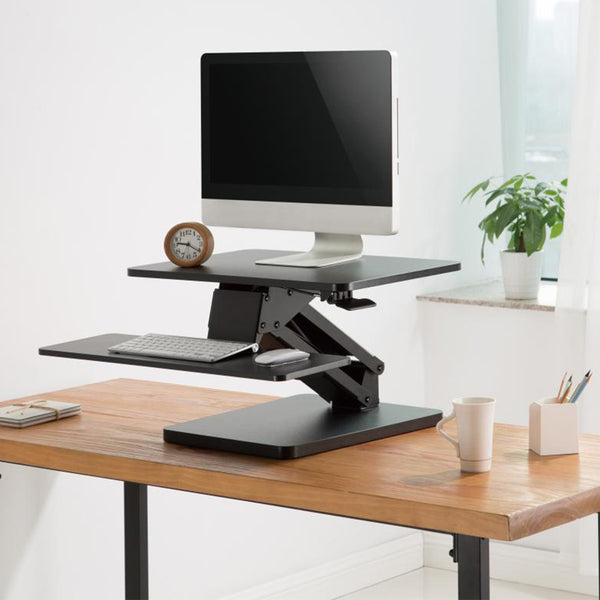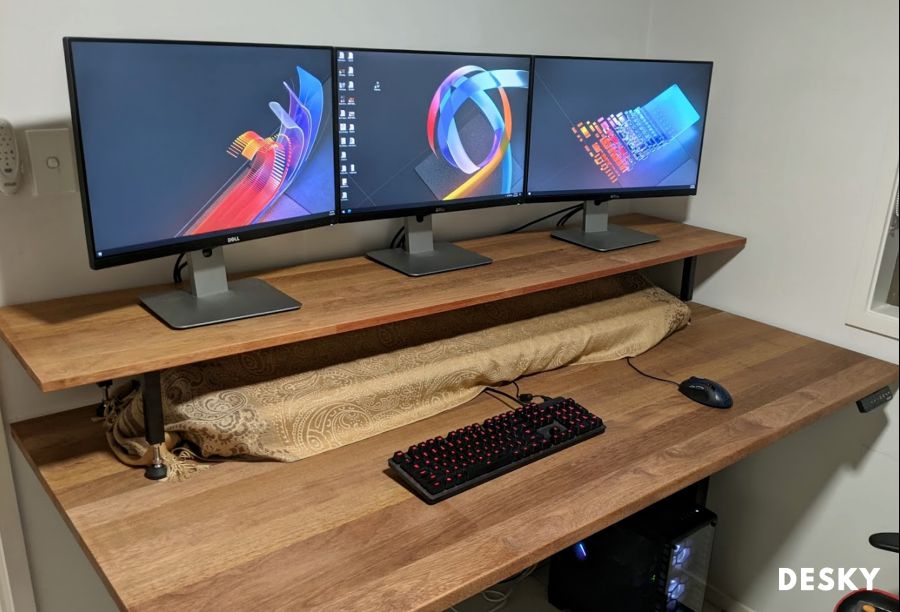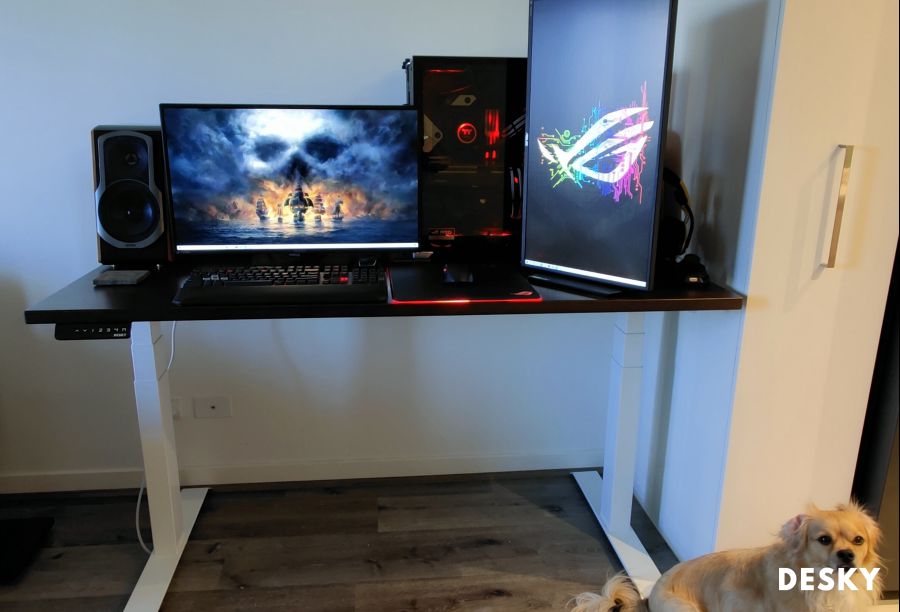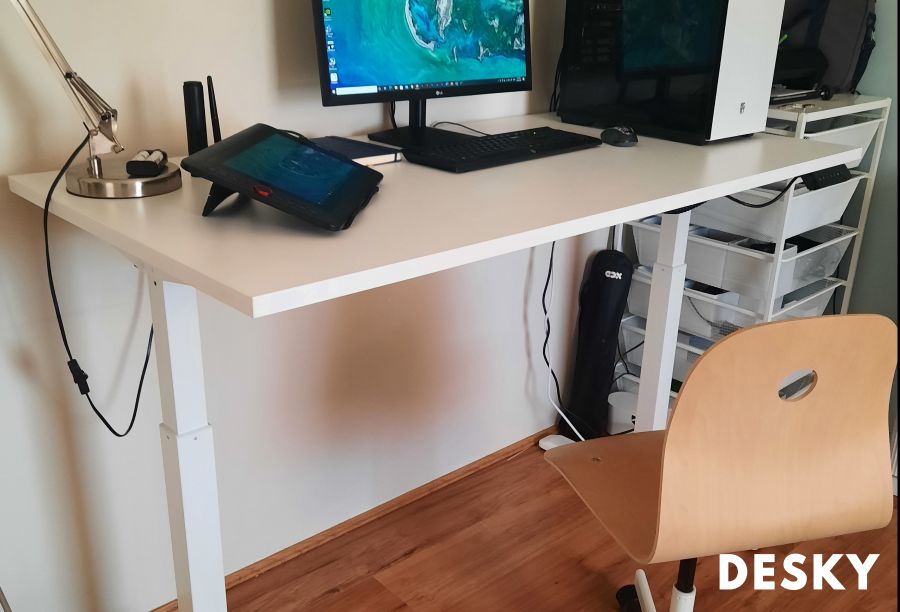Current research concludes that the general population tends to sit too much during the day. Additionally, as our lives become more automated and digital, many individuals will sit for long periods in front of a computer screen or at desks because of their job requirements.
Unfortunately, these prolonged periods may have a greater risk to your body and overall health. There are numerous health risks, including obesity, heart disease, high cholesterol, and more, when people do not move throughout the day.
However, not everyone can change their job to a more active position to better their health. Even performing regular exercises in your spare time may not be enough. So, what can you do to keep healthy if you need to work in an office all day? The answer can be as simple as using a standing desk.
What Is a Standing Desk?

A standing desk is simply a desk surface that is able to elevate to a higher height in order to allow an individual to stand while typing, writing, or performing other desk activities. These desks have numerous features to enable customization and are suitable for people of all heights.
Depending on your workplace needs, a standing desk may suit your space without worrying about any considerable furniture arrangements in your existing office. The styles and models vary significantly and range in price from a few hundred dollars to over a thousand, subjective to your individual wants and needs.
Although you will not be moving around while working at a standing desk, taking care of your feet is still vital. Any time you remain in a position for extended periods, it is critical that you observe proper posture and support your joints, limbs, and muscles correctly.
This way, you can remain comfortable during your workday and prevent future problems or injuries.
However, how you stand at your workstation can vary. Will you wear shoes, go barefoot, or just enjoy the freedom of wearing socks? Each of these situations will affect how long you can stand, the pressure and stress on your limbs and joints, and how your feet feel after an entire day of work.
Is Standing Barefoot Good for You?
Yes, standing barefoot is good for you as it can strengthen your feet muscles. However, it really depends on the situation and the length of time that you're standing barefoot for. Many individuals believe that the body is not meant to wear shoes full-time. On the other hand, many factors affect how the body reacts and functions when individuals do not use footwear. Of course, some studies will attest that barefoot is best for your feet, while others insist that the foot requires manufactured supports.
Let’s take a look at what standing barefoot entails.
What Happens to the Body When You Stand Barefoot
The body has to make alternative accommodations when standing barefoot. Because there is nothing between the soles of your feet and the ground, the nerve endings in the feet will be more active.
These receptors send signals to the brain from your feet and ankles about their position and the surrounding environment. So, naturally, your body will feel and be more aware of the floor surface than when using shoes, so it can make adjustments if necessary.
Standing barefoot can aid in strengthening the muscles and ligaments in the foot and promoting better movement flexibility. Often shoes will automatically provide stability and support, so the foot does not have to engage its supporting muscles and ligaments. Without footwear, the body must take over these functions.
Individuals that stand barefoot can help enhance their posture and balance, burn more calories, and improve muscle tone. In addition, anyone who refrains from sitting for long periods may see a decrease in neck, shoulder, or back pain that resulted from an uncomfortable office chair or improper sitting posture.
Standing and walking without shoes forces the body to hold and maintain its natural positioning. You may find that standing barefoot is more freeing and feels better for your feet, ankles, and legs.
So, is barefoot standing good for you then? The answer will depend on the person and the amount of time they stand for.
Consequently, individuals who have concerns with their feet that require corrective inserts or orthopedic shoes will find that having bare feet while standing or walking can aggravate their pain and current problems.
Alternatively, individuals who stand for a prolonged period without shoes can experience adverse reactions to standing barefoot. Foot and leg pain from continuous standing is just one negative side effect, especially if they do not use proper posture.
The upper body will also help compensate with balance and stability while standing, increasing overall fatigue.
Proper Weight Distribution
It can be easier to feel your body weight distribution between feet when you are not wearing shoes. Therefore, your entire body weight should evenly disperse to both feet.
However, the plantar pressure across the entire sole of the foot is not even throughout. Research shows that the proper total body weight allocation will be approximately 57-60% falling on the heels while 40-43% allocates to the forefoot, and the remaining 6-8% ends up on the arch.
Alternatively, if there is improper distribution throughout the sole, you can experience knee and hip problems. Therefore, having the correct amount of weight through the foot will ensure that you do not lock your knees or refrain from tilting your hips forward, which could create back pain.
Is It Better to Stand Barefoot or in Shoes?
If you made the switch to a standing desk or are thinking of including one in your office, proper placement and use are critical for your posture and health. While standing can be better for you than sitting all day, it could be harmful if you are not using the correct tools or resources.
So, should you stand barefoot or use supportive shoes while using standing desks? First, let’s take a look at the pros and cons of going barefoot.
Pros of Standing Barefoot
The health benefits of standing barefoot are plenty.
-
Barefoot standing creates a more natural environment for the body
-
Burns more calories than sitting
-
Improves posture
-
Encourages better balance
-
Strengthens the foot muscles and ligaments
-
Improves blood flow
-
Lowers the risk of obesity, high cholesterol, heart disease
-
Lowers blood sugars after eating
-
Strengthen and improves leg muscle tone
-
Strengthens the back and core muscles
Standing and walking barefoot are becoming increasingly more popular. Alternatively, some people take it a step further by venturing outside. Also known as earthing or grounding, this therapeutic method of connecting directly to the earth can be advantageous for many individuals.
Although there are not many conclusive studies that state the immense benefits of going barefoot outdoors, people may find an improvement in mood, stress release, and a general sense of well-being when regularly going without footwear.
Cons of Standing Barefoot
However, every action has an adverse reaction, and there are some negative aspects you may experience when you go barefoot.
-
Moist environments can heighten the risk of athlete’s foot, plantar warts, or other foot-related health issues
-
Without proper arch support, some individuals may develop flat feet
-
Increases overall body fatigue
-
Back problems and muscle spasms can increase with prolonged standing
-
Seeing heightened symptoms of pre-existing foot conditions when standing barefoot for long periods
-
Increases the chances of foot injuries
-
Does not emulate a professional atmosphere
-
Poses safety risks for the feet
When you refrain from wearing shoes, you increase the chances of facing adverse side effects. Spending too much time on bare feet can produce heel pain, plantar fasciitis, and leg discomfort. As with any muscle group, overuse injuries are prominent when the body does not receive adequate rest and recovery.
If you work in a professional setting outside the home, standing barefoot may not be an option for you. Some companies have policies to restrict this choice in the workplace, while other locations going barefoot may not be possible due to the floor conditions.
Falling items or clutter in the office can mean stubbed toes or hurt feet that may not occur when you wear shoes. Anyone who wants to put their footwear aside in the office should be mindful of not dropping their stapler or stepping on a thumbtack.
The Verdict: Bare Feet or Wear Shoes At Your Standing Desk?
All of this information can be confusing if you are newly exploring the ins and outs of foot health. While there are many benefits to standing with bare feet, wearing shoes with proper support can also be advantageous.
So, which route do you choose while you work at a standing desk?
Ideally, you want to recognize how healthy your feet are and if you require additional support when standing. Some people who do not experience any pre-existing conditions may benefit from short periods of standing barefoot.
However, if there are any concerns about arch support, heel issues, or foot posture orientation, wearing corrective footwear is your best bet. You do not want to aggravate any current problems, creating more discomfort or pain due to standing periods.
Try Using an Anti-Fatigue Mat
Whether you decide to go barefoot or use supportive shoes while at a standing desk, you can do more for your overall comfort. By using an anti-fatigue mat, you can provide additional benefits for your feet, no matter which route you choose while standing.
Anti-fatigue mats contain soft materials, such as rubber or vinyl, that help make standing on hard surfaces easier on the feet, limbs, and joints. Additionally, these products provide a cushioned surface that helps promote circulation and reduces overall fatigue.
Individuals who use these mats at their workstations will typically have better focus, have more energy, and are more productive. So, whether you choose bare feet or shoes, adding an anti-fatigue mat can also benefit your body.
Which Shoes Are Best for Long-Standing All Day?
If your feet require supportive footwear while standing for an entire day, not all shoes are created equal. To choose the best comfortable shoes for prolonged standing periods, follow these simple guidelines when making a decision.
-
Offer proper arch support for your foot alignment, such as pronation or supination
-
Use cushioned footbeds
-
Ample toe room to accommodate foot swelling
-
Appropriate foot size to avoid constricting or slipping during wear
-
Avoid flat shoes like flip flops
-
Be aware of your gait and if your foot pronates or supinates for proper alignment
-
Provides good ankle support
Naturally, individual feet will vary from person to person, so what shoe style works best for you may not be suitable for someone else. However, many retailers can provide a free gait and foot assessment to guide you in choosing the best shoe. This way, you are sure to get the perfect product that will not cause issues and help you remain comfortable when you stand for long periods.
Get the Most Benefits From A Standing Desk
To receive the most benefits and keep your feet and body happy, healthy, and strong to avoid injuries, you should break up long periods of standing and alternate to a sitting position. Staying in one place for an extended time is not good for your joints and muscles, whether sitting or standing.
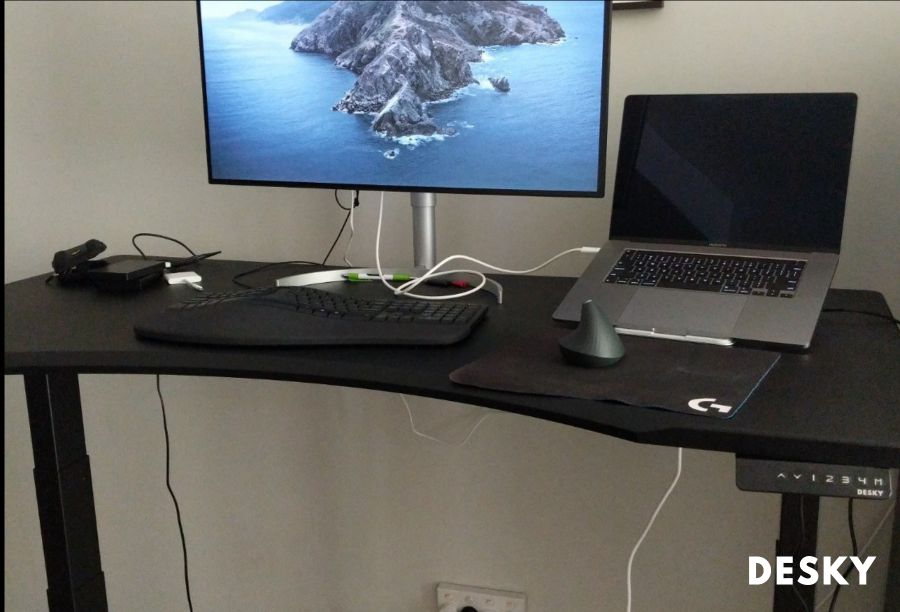
Using an adjustable standing desk that will remain lower as you sit and raise to work while standing is ideal. The recommendation of many health professionals is to follow the 20-8-2 rule.
For every 20 minutes of sitting, you should stand up for eight minutes and then move for two minutes. This balance can look like sitting at your desk, then raising it up for eight minutes of work, and finally taking a quick walk to refill your coffee cup or take a washroom break. Don't forget to sit ergonomically at your desk for maximum benefit.
While the 20-8-2 rule may not be feasible for everyone, another simple guideline is to sit for 30 minutes and stand for 30 minutes. If standing for this long is challenging, you can try standing each time you receive a phone call, helping to break up your sitting periods.
Remember to be flexible. Some days you may want to stand more than others, increasing the benefits to your feet, legs, and body, while other times will be the opposite. The most important aspect of using a standing desk is to listen to your body. If you are uncomfortable or in pain, adjustments should be in order.
Looking for accessories for your new standing desk? Take a look at Desky's range of anti-fatigue mats here!
source https://desky.com.au/blogs/news/wear-shoes-standing-desk
